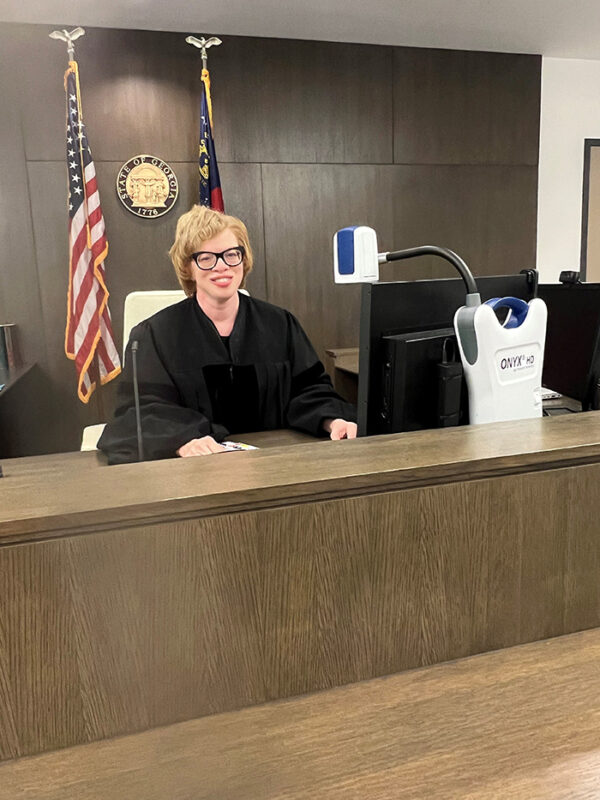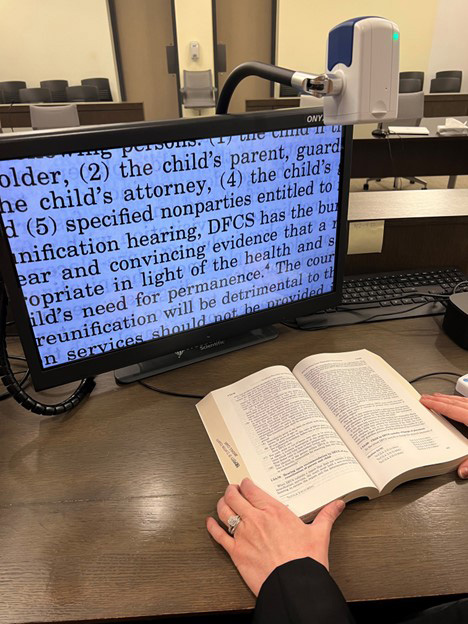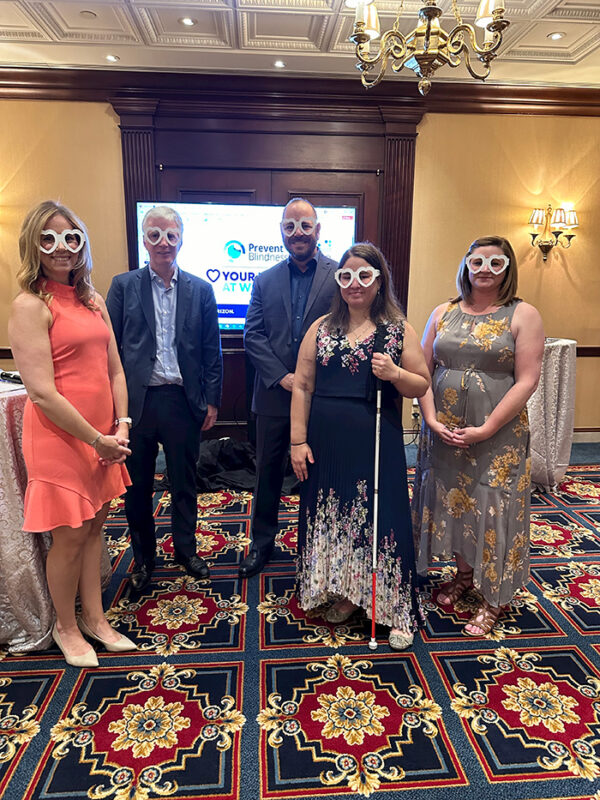By Rosalind Isom
During my legal career, I have been both an attorney and a judge. As an attorney, I developed many personal tools to navigate successfully with my visual impairment. If I was aware in advance that I had to read in open court, I would prepare to read. If it was case numbers, I would write them very large on my pad and read from my pad instead of the calendar distributed by the court in significantly smaller print which I could only read from about six inches from my face. If it was an argument for a case and I did not know it or memorize it, I would write notes largely on a pad. Through the years I learned how to determine when and how I needed to prepare to deliver oral information to avoid reading small print.

I feel like when I look down to read, I lose credibility because suddenly instead of listening to what is said the focus shifts to why is she reading so closely. People sometimes seem to act like there is a nexus between vision and intellectual ability. I have experienced being treated differently, as if my legal blindness means I must not be intelligent. I sense this because I am then approached at least initially with the universal reaction to any disability, speaking slowly, softly and using simple words.

As an attorney seeing people’s faces was never a true concern. Other communication such as tone of voice and actual words used helped guide me. I could never see the details of the judge’s face either. So, I am sure there were times when the judges face said stop and I continued to push an argument that was not favorable in the court’s opinion. The most humiliating incident I remember in court was after I allowed myself to be vulnerable by sharing my visual impairment to improve my work. I approached a judge in rural Harolson County, Georgia, which was not welcoming to outsiders and certainly not me. During a hearing, I cited a statute, and the judge specifically asked me to read it out loud with knowledge of my visual impairment and a copy of the code book the statute came from in his possession. As I lifted the book and tried to read from a distance that people with perfect vision read from, I was quickly forced to bring the book within six to eight inches of my eyes. This situation really bothered me. Nothing is more sensitive to me on a personal level than my eyesight and skin tone. Most of the time when I am reading in public, I don’t realize how closely I am looking at something or that my eyes and head may be moving due to my nystagmus. It’s not until I see myself in a picture or video that I realize how close I am to what I am looking at. I would never jeopardize a client or anyone before me in court because I cannot read something. I will do what I must do to read the material.
The responsibility and view from the bench are different from the attorney table, you are responsibility for considering everyone, not just your client. What I quickly discovered while on the bench is I could not see any details of anyone’s face. The numbers and names on the court calendar were very small. Thankfully, I purchased an adaptive device to enlarge print that also has a magnifier which when turned away allows you to view people and things in front of you. When the camera is turned outward, everything and everyone in the courtroom was in view. There was as much communication nonverbally as there was verbally and inappropriate acts. Without my adaptive device, I referred to people in the court room by the wrong gender because I could not see them. Each time I go to court, I take my 20-30 lb. device off my desk, place it in a rolling cart, roll it to the courtroom, take it out, plug it up, listen to it beep four loud times as it turns on and point it in the direction needed to allow me to see from the bench. Each time I bring it into the courtroom, I know people wonder what it is, a few have asked, and those close to me figured it out. I simply tell them it helps me see better. I did not realize how much there is to take note of from the bench. My device makes things tremendously clearer.
I am grateful for my time on the bench and more grateful to have a clear view.



